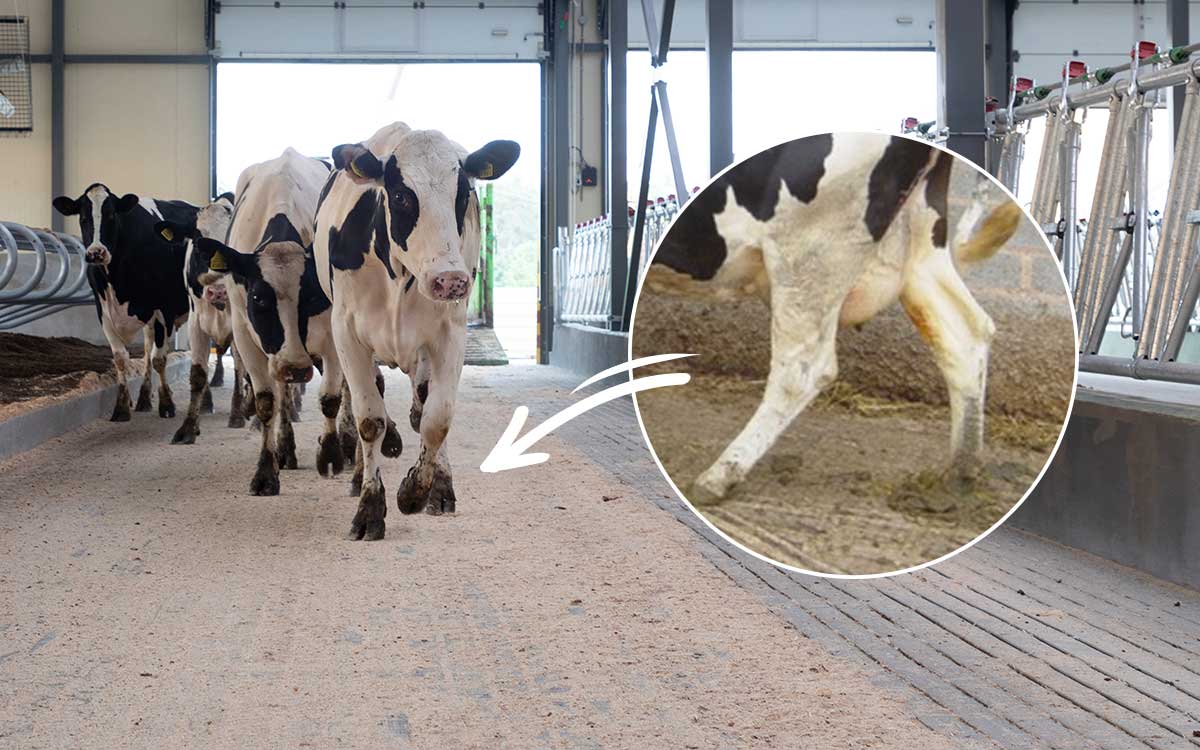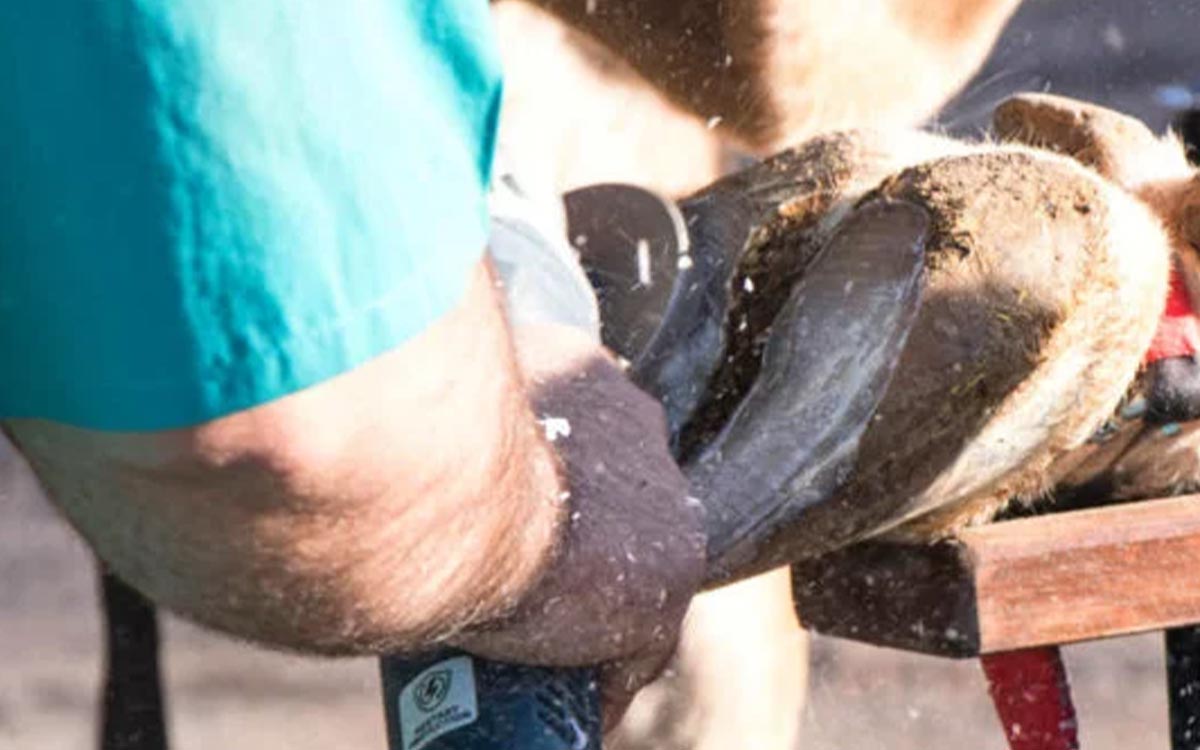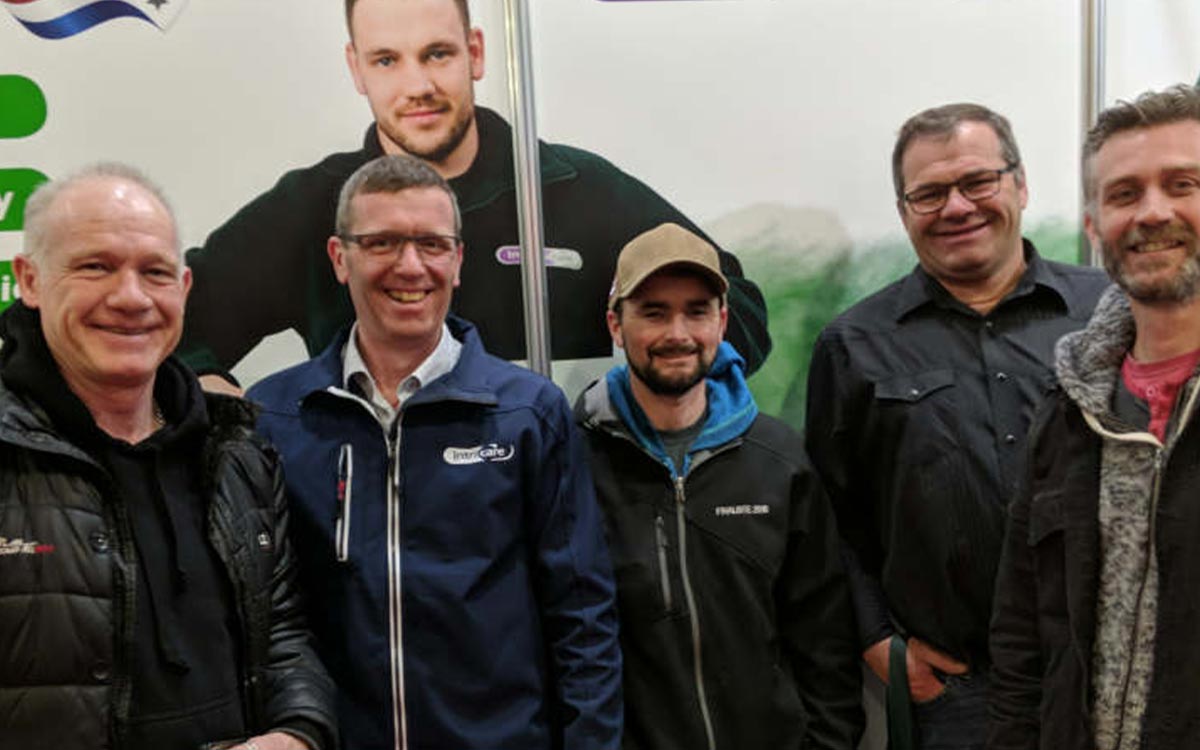Table of Contents
Nothing ruins your day like a cow limping through the pasture or your barn. As a hoof trimmer, it’s not a common find that a foreign object penetrates the hoof, but if you find one, it causes pain and lameness and can lead to secondary severe infections if left unchecked. Catching and treating these injuries quickly ensures your cow returns to doing what she does best – eating happily and producing milk or beef for your farm. Let’s dive into the nitty-gritty of hoof penetration in this post.
A foreign object penetrating a cow’s hoof causes pain, lameness, and potential infections. Immediate action is necessary, such as removing the object by a professional hoof trimmer, using hoof blocks to relieve pressure, and consulting a veterinarian for any infections. Regular monitoring helps prevent further complications.
Table of Contents

When a Foreign Object Penetrates the Hoof
The Importance of Hoof Health in Cattle Care
As any livestock owner knows, keeping an eye on your cattle’s hooves is essential. Healthy hooves mean happy cows, and happy cows are more productive. Regular mobility scoring is a must-do – monitoring hoof health ensures that minor issues are caught before they become major problems. Today, we’re focusing on one particularly nasty scenario: a foreign object penetrating the hoof.
Signs of a Foreign Object in the Hoof
Keeping an Eye Out: Recognizing Early Signs
Catching lameness early, mainly when caused by hoof penetration, is crucial in preventing more severe complications like infections and prolonged lameness and damage. Let’s review the signs that should set off alarm bells.
What To Look For:
Lameness
The first sign of trouble starts with swelling and limping. If your cow is hobbling, it indicates that something is up – or, more accurately, down – with her hoof. This discomfort can be due to anything, but for this article about foreign objects, it could be caused by a simple stone or a nasty nail lodged in her foot.
Read More: Lameness on Dairy Farms
Visible Injury
Sensitivity or Pain
Cows may not wince like humans, but they sure will let you know through body language. If Bella flinches or pulls away when you touch the affected hoof, it’s a red flag. In our hoof trimming practice, we use the hoof pliers to find the deeper or less obvious hoof problems.
Localized Heat or Swelling
If the area around the injury is warmer than usual or swollen, infection could be a secondary cause of lameness. Cows don’t get fevers on their feet for no reason, after all.
Visible Foreign Object
And sometimes, the cause of the trouble isn’t playing hide-and-seek. If you can see the culprit – be it a nail, rock, or another sharp object – you’ve literally hit the nail on the head!

Common Risks: Where Do Those Foreign Objects Come From?
Ever wonder what’s lurking out there to poke those hooves? Knowing where the dangers hide can help you stop injuries before they even occur.
Some Usual Suspects:
Objects in Fields or Pastures
Grazing areas can be littered with debris and sharp objects. Old farm equipment, broken glass, or bits of wire can all pose a risk. Regularly checking fields can dramatically reduce these hazards.
Objects Left on Barn
Barns should be safe for the animals, not danger zones. But nails, screws, and other sharp objects left on the barn floor can quickly turn into hoof-piercing villains.
Rocks on Walkways
While rocks might seem harmless, they can become embedded in hooves, especially in walkways where cattle frequently walk. Smooth, clean paths are the way to go. A common way to get small rocks (pebbles) in a barn, for example, is when a tractor tracks rocks from a gravelled yard into the concrete area where the cows walk.
Nails and Electrical Staples
These are particularly dangerous and are often found around fencing or construction areas. Regularly cleaning up these spots can save you a lot of trouble.
Leaving a Hoof Wrap on the Foot Too Long
Believe it or not, sometimes the problem comes from trying to solve another hoof problem. If hoof wraps are left on too long, they can cause additional harm, like digging and penetrating into the skin. Many of our hoof trimmers have seen claws nearly amputated due to a neglected hoof wrap that was not removed.
Improper Management of Hoof Blocks
These are more common than we think. If a hoof block is left on too long or is wearing wrong, the block itself or its glue can penetrate the hoof and cause significant damage. Use hoof blocks as a tool and regularly check the progress of healing. More information on how to properly manage blocks can be found in our post, ‘Hoof Blocking: What You Need to Know’.

Treatment of a Penetrated Hoof
As soon as you notice something is amiss, it’s critical to take swift action. Ignoring a penetrated hoof can lead to nasty infections and longer-term issues that nobody wants to deal with.
Steps to Set Things Right:
Hoof Trimming by a Professional
While it might be tempting to handle things yourself, this scenario is best left to the pros. Professional hoof trimmers can carefully and effectively remove foreign objects, minimizing further damage.
Blocking the Healthy Hoof
This involves fitting a block to the healthy side of the hoof, allowing the injured hoof to heal without bearing weight. It’s like giving your cow a crutch to relieve the pressure and pain.
Treating the Infection After Consultation with the Veterinarian
Minor penetrations can be handled by your hoof trimmer. These cases will heal on their own when the foreign object is removed. In our practice, we use Repiderma to promote healthy skin.
Consult a veterinarian to properly treat any severe hoof infections that may arise from the injury. They can prescribe the right antibiotics and ensure the wound is cleaned and bandaged correctly.

In conclusion
Hoof penetration is a severe problem. Taking steps to prevent and treat these injuries can keep your cattle healthy and productive. Let’s remember to monitor our cattle’s hooves for early signs, be aware of common causes lurking in their environments, and spring into action with proper treatment when needed.
Frequently Asked Questions
What should I do if I see a foreign object in my cow’s hoof?
Immediately consult a professional hoof trimmer or your veterinarian to assess the injury and determine the appropriate treatment. Acting swiftly can prevent infection and further damage.
Can foreign object penetration lead to more serious issues?
Absolutely! If left untreated, it can result in severe infections and long-term lameness. That’s why prompt treatment is critical – prevention is always better than cure.




